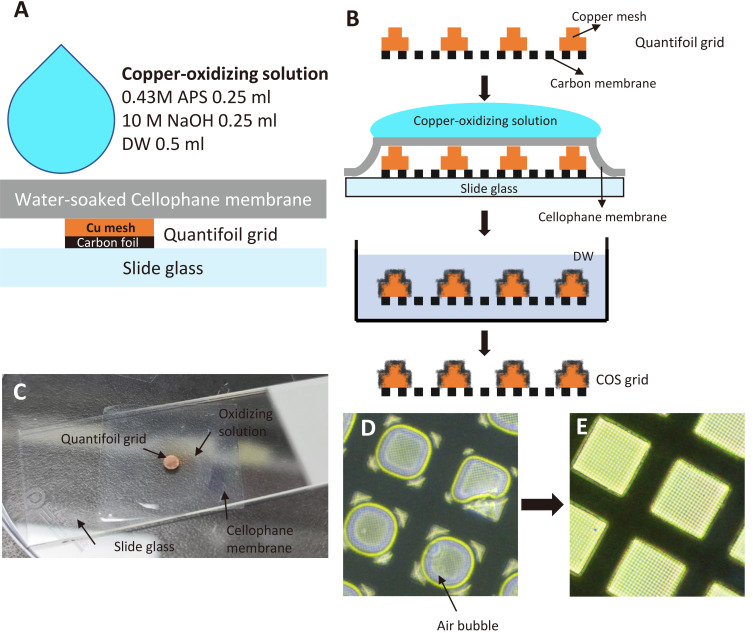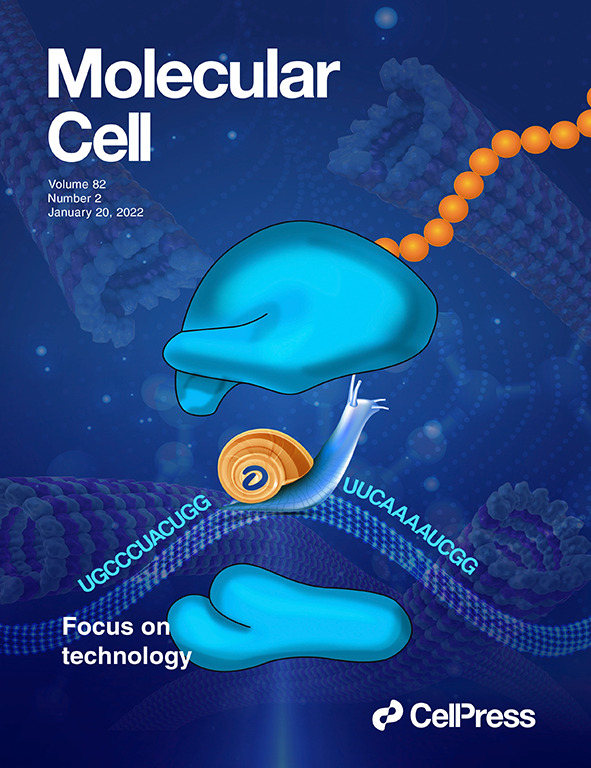在低温电子显微镜中用于增强溶液转移的氧化铜尖峰栅格。
IF 3.7
3区 生物学
Q2 BIOCHEMISTRY & MOLECULAR BIOLOGY
引用次数: 0
摘要
形成均匀的玻璃体冰是制备低温电子显微镜(cryo-EM)样品的关键步骤。尽管EM技术进步迅速,但在冷冻EM成像中,控制样品网格上玻璃冰的厚度并保持再现性仍然是获得高质量数据的主要障碍。常用的经典吸墨法面临过多的水无法被滤纸吸收的问题,导致形成厚且不均匀的冰。在这项研究中,我们提出了一种新的方法,将最近开发的纳米线自吸技术与经典的印迹方法相结合,以有效控制玻璃化冰的厚度和均匀性。通过简单的程序,我们通过在市售的铜格栅上诱导COS来生成氧化铜尖峰(COS)格栅,这可以在印迹过程中有效去除多余的水,而不会损坏多孔碳膜。与未氧化的格栅相比,可以以良好的再现性来控制冰的厚度。结合到其他EM技术中,我们的新修改方法是在冷冻EM成像过程中获得高质量数据的有效选择。本文章由计算机程序翻译,如有差异,请以英文原文为准。



Copper Oxide Spike Grids for Enhanced Solution Transfer in Cryogenic Electron Microscopy
The formation of uniform vitreous ice is a crucial step in the preparation of samples for cryogenic electron microscopy (cryo-EM). Despite the rapid technological progress in EM, controlling the thickness of vitreous ice on sample grids with reproducibility remains a major obstacle to obtaining high-quality data in cryo-EM imaging. The commonly employed classical blotting process faces the problem of excess water that cannot be absorbed by the filter paper, resulting in the formation of thick and heterogeneous ice. In this study, we propose a novel approach that combines the recently developed nanowire self-wicking technique with the classical blotting method to effectively control the thickness and homogeneity of vitrified ice. With simple procedures, we generated a copper oxide spike (COS) grid by inducing COSs on commercially available copper grids, which can effectively remove excess water during the blotting procedure without damaging the holey carbon membrane. The ice thickness could be controlled with good reproducibility compared to non-oxidized grids. Incorporated into other EM techniques, our new modification method is an effective option for obtaining high-quality data during cryo-EM imaging.
求助全文
通过发布文献求助,成功后即可免费获取论文全文。
去求助
来源期刊

Molecules and Cells
生物-生化与分子生物学
CiteScore
6.60
自引率
10.50%
发文量
83
审稿时长
2.3 months
期刊介绍:
Molecules and Cells is an international on-line open-access journal devoted to the advancement and dissemination of fundamental knowledge in molecular and cellular biology. It was launched in 1990 and ISO abbreviation is "Mol. Cells". Reports on a broad range of topics of general interest to molecular and cell biologists are published. It is published on the last day of each month by the Korean Society for Molecular and Cellular Biology.
 求助内容:
求助内容: 应助结果提醒方式:
应助结果提醒方式:


